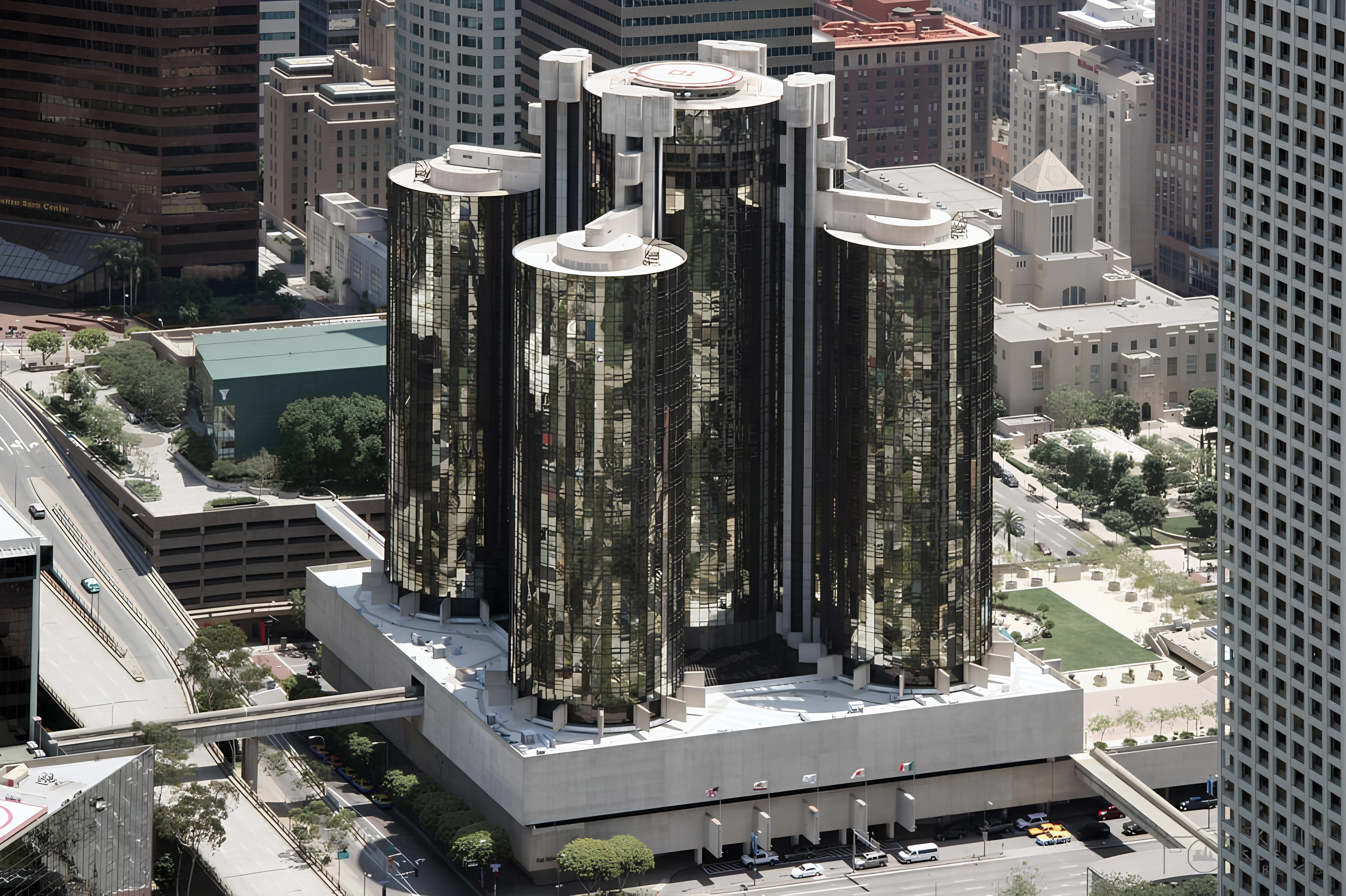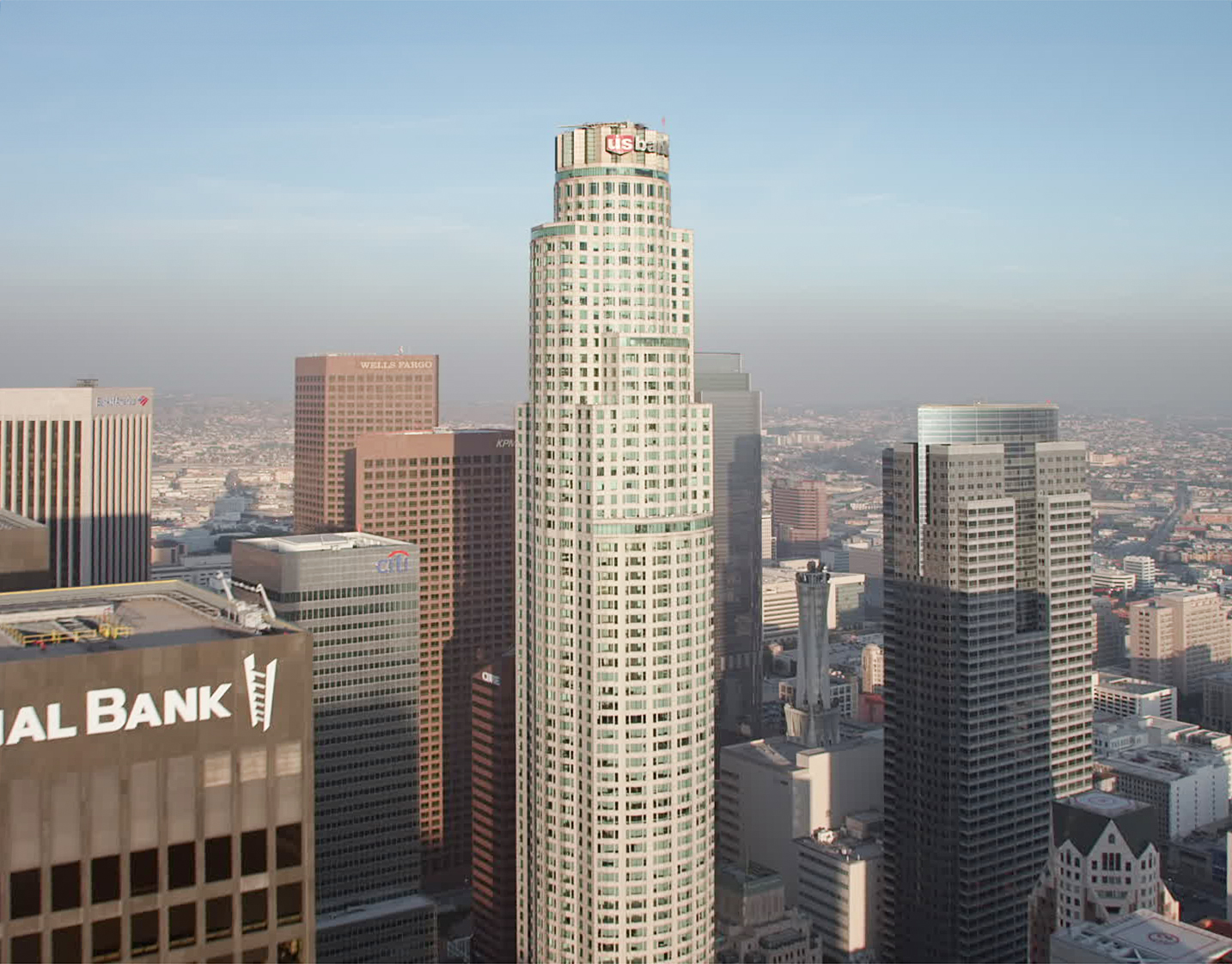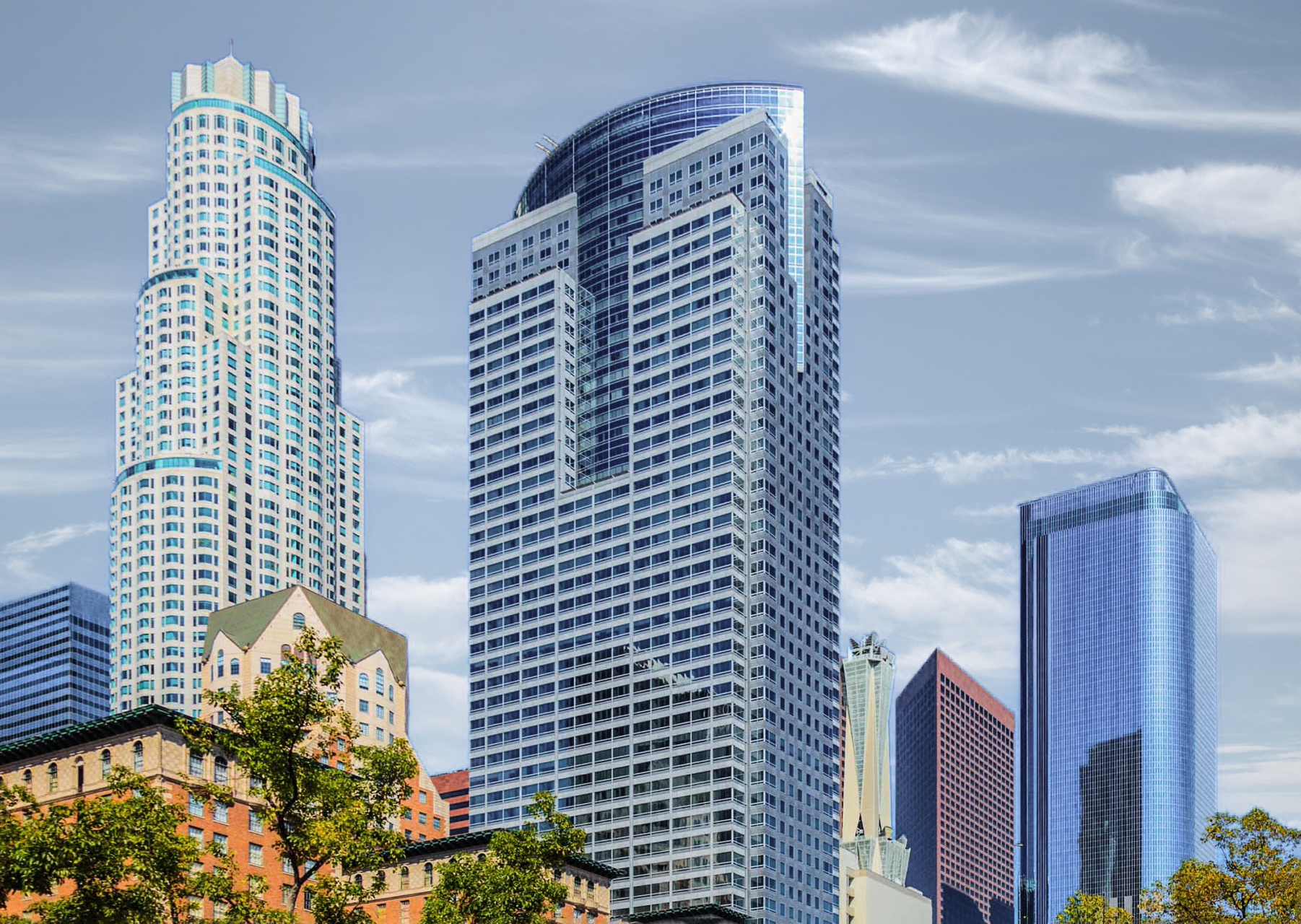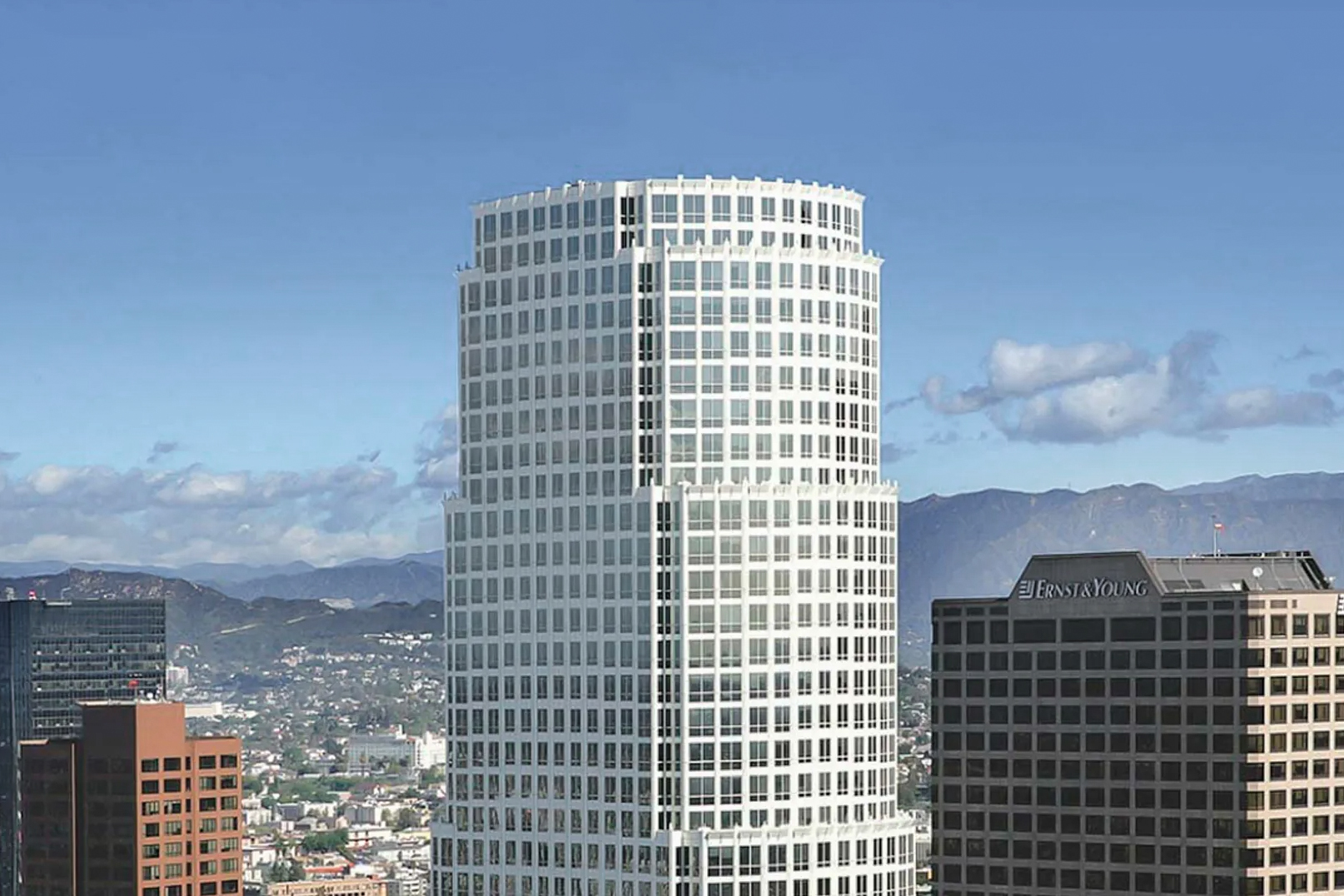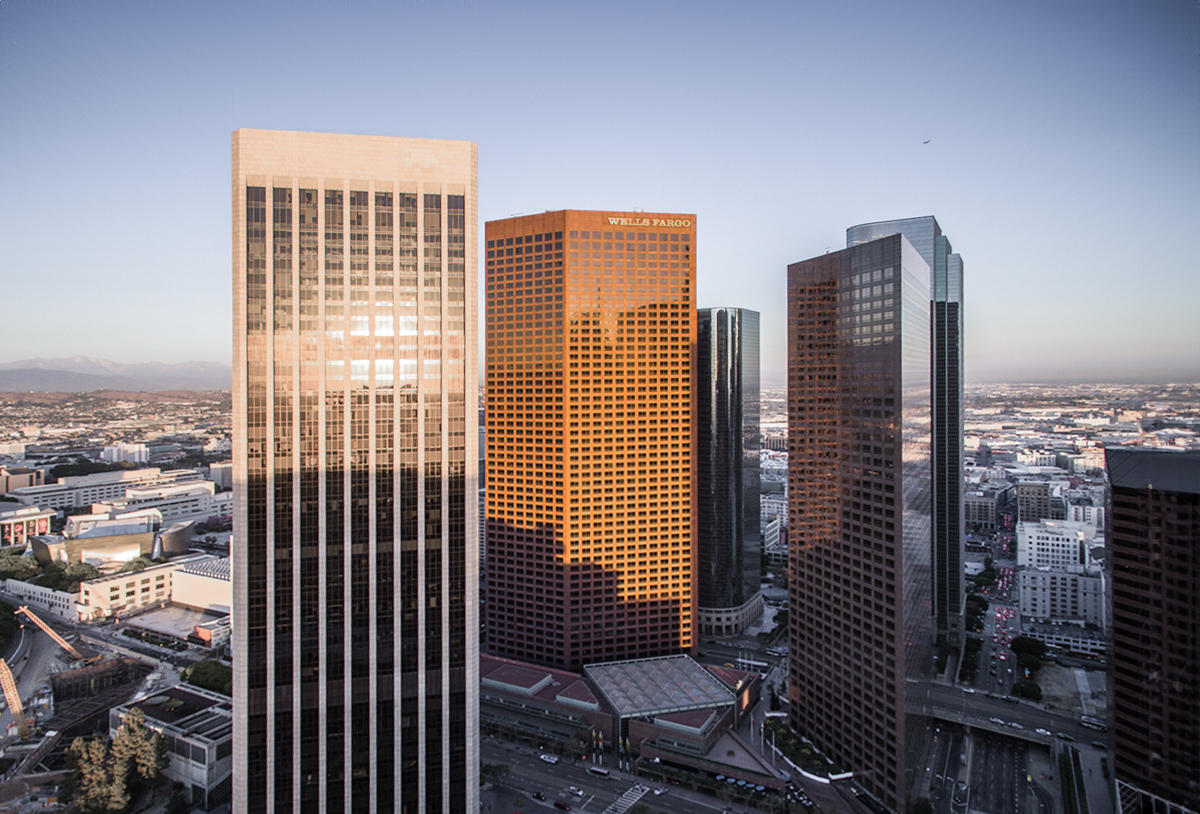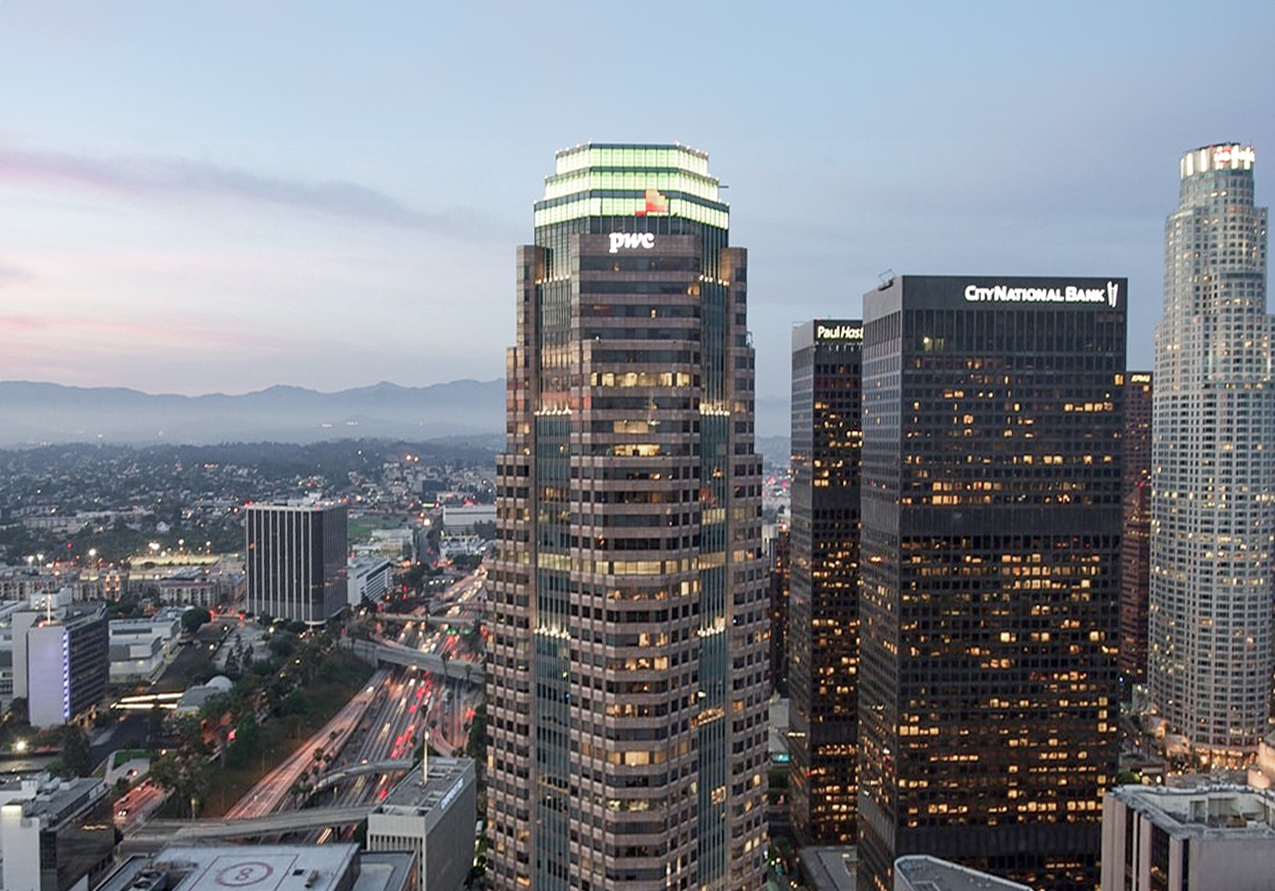The Westin Bonaventure Hotel is a Postmodernist skyscraper designed by John C. Portman Jr., and built between 1974 and 1976 in Los Angeles, CA.
Its precise street address is 404 South Figueroa Street, Los Angeles, CA. You can also find it on the map here.
The building is, in many ways, a self-contained city. Organized by gardened atriums and glass elevators, the building does not only contain hotel rooms, but also shops, hair salons, restaurants, convention halls, a gym with an indoor jogging track, an outdoor pool... and more.
On the 35th floor of the central tower, there is a revolving cocktail lounge that provides 360º panoramic views of Los Angeles.
